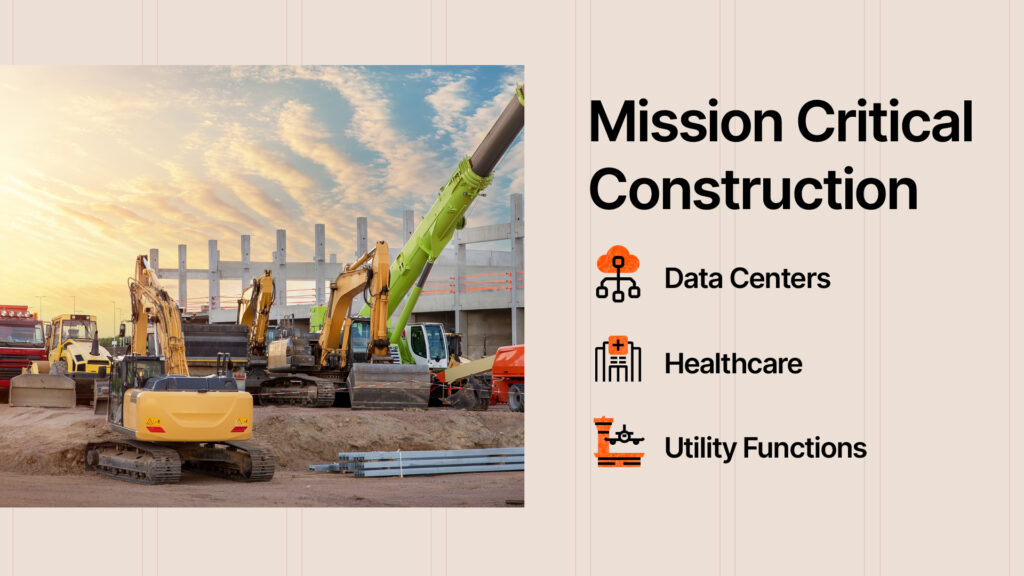— 12 min read
AHJs in Construction: Gaining Approval from Government Authorities
Last Updated Jun 11, 2024
Last Updated Jun 11, 2024

In construction, an Authority Having Jurisdiction, or AHJ, is essentially any organization or office that’s responsible for enforcing standards and codes. It’s most common to interact with an AHJ in the form of a department of buildings to get permits for construction, but it also refers to the duties of fire departments and marshals, zoning boards, inspectors and more.
Ultimately, AHJs are responsible for ensuring a building is safe for occupants to enter, work in and live within. Keeping a close relationship with them can be a good way for a general contractor to make handover smoother and keep a project on track and on time.
This article explores the duties of AHJs and best practices for managing the relationship between GCs and AHJs.
Table of contents
Types of Authorities Having Jurisdictions (AHJs)
The owner is typically responsible for submitting permits, but there are some exceptions, and GC will still interact with AHJs throughout a construction project. Navigating these knowledgeably and with a sense of grace can help a contractor maintain relationships and even make future jobs easier.
The number of AHJs a GC may come into contact with on a project is specific to the location and demands of that particular job, but there are a few every contractor should know about, including local buildings departments, fire departments, land use regulators and zoning boards. This article will also discuss a handful of others a GC may want to know.
Buildings Department
When a local buildings department issues a permit to begin construction, or fulfills the final inspection before handover, it is performing its duty as an Authority Having Jurisdiction — after all, a certificate of occupancy basically certifies that a building is up to safety regulations and can be used, and that’s exactly what an AHJ is for.
In general, a buildings department is typically responsible for either completing or outsourcing the structural, mechanical, electrical, and plumbing reviews of a building. Often these are done in stages and may occur during rough-in, before close-in, and before the final inspection.
In addition to issuing a construction work permit, the local buildings department will also issue a job card, which is a document that lists all the inspections and reviews necessary, and on which GC will collect signatures to show they have completed these steps before final inspection. Often, a buildings department will only issue one original job card per project or permit, and it should be kept on the jobsite, so it’s important not to lose it.
It’s also important not to confuse a job card with a permit. Essentially, a job card allows a contractor to order an inspection toward the end of the build—and in general, an inspector needs to sign the original, not a copy.
There is no federal building code, or federal department of buildings, meaning that the regulation of construction is a right of states—although the U.S. General Services Administration does regulate construction on federally owned buildings. A few states leave the development of building codes entirely up to local municipalities, meaning that some few rural, unincorporated areas may have no building codes at all.
Fire Department
Nobody wants to see a building catch fire, which makes the role of the fire marshal a very powerful player in the process of getting AHJ approval on a construction project. A local fire department typically conducts a fire and life safety review before final inspection, but depending on the jurisdiction, it also might issue certain permits—for example, in New York City, if a construction project needs to house hazardous or combustible material onsite, a GC must apply for a special permit.
The same goes in Boston for doing work on a fire alarm or sprinkler system. A Fire Department also performs Plan Check and is a required reviewer before a construction permit is issued.
A common issue a GC may run into with a fire and life safety review is that a build has not followed the set of drawings exactly as they were submitted to the department, which can affect the safety of the structure. Another issue may be that a fire marshal orders a material upgrade for safety concerns; regardless of the cost impact to the project budget, this typically needs to be followed.
Land Use Regulators and Zoning Boards
State and local governments predominantly regulate land use, akin to building codes. While the federal government has enacted several land use laws, it usually refrains from intervening in development regulation unless a protected environmental area faces threats. Typically, two entities regulate land use: a legislative body, such as a city council or state legislature, and a zoning board. This board may consist of community members who are either elected, appointed by city officials or serve through a mix of both appointment methods.
A zoning board's primary duty involves reviewing cases that may warrant exceptions to land use, known as zoning variances. Property owners or owner-builders might need these variances to alter a land's use or to construct a building taller than the area's regulations permit. Additionally, if a ruling prevents construction, an owner or owner-builder must submit appeals to the zoning board.
Other Types of AHJs
A handful of other Authorities Having Jurisdiction exist that a contractor may want to be familiar with. Some of these include the Occupational Safety and Health Administration, or OSHA, which regulates construction work safety, and also the local departments of transportation, which typically set specifications for transportation projects and issue permits for working on roadways and bridges. It’s important to consider the type of project and the many regulating bodies under whose jurisdiction the project might fall.
What does not qualify as an AHJ?
The exact definition of an Authority Having Jurisdiction is broad, and it often may look like it applies to almost any authority a GC or owner-builder might need to seek approval from. In general, though, an AHJ’s authority is derived from its power to approve buildings as safe for use.
Other organizations might be involved in the development of building and fire codes — such as the International Code Council (ICC) or the National Fire Prevention Association (NFPA )— but while these may help create regulations for safety, they do not have the authority to issue permits, and they don’t have control over whether a state or local government adopts their standards.
Stay updated on what’s happening in construction.
Subscribe to Blueprint, Procore’s free construction newsletter, to get content from industry experts delivered straight to your inbox.

Documents to Submit to an AHJ
Ultimately, it’s the responsibility of the owner or their rep to submit for permits, but not everyone is experienced with this process, and it’s possible this process could fall on a GC. It should happen after bidding since the application often requires submitting the projected cost of the project.
Below is a list of what an AHJ may need to be provided with to ensure a smooth permitting and inspection process.
| Document | Considerations |
|---|---|
| Permit application | The permit application differs depending on whether the construction is of a new or existing building. Upon completing the application, the applicant may get a number and website to track the status of the permit. Here’s a sample permit application for construction work in the City of Hoboken, New Jersey. Some, like this one, cannot be submitted electronically. |
| A complete set of drawings | The design and architecture teams will make these, and a complete set will show the full scale of all the building systems in the proposed project, including heating, plumbing, electrical and architectural designs. They should be as final as possible at the time of a permit application, and updates may require another plan check. Minor changes are required to be documented formally in RFIs. |
| Letter of authorization | This is a document signed by an owner that authorizes the GC to shepherd the permitting process in their absence, if necessary. |
| Documentation (throughout the permitting process) | Sometimes, during an inspection, an inspector points out an issue that either was missed in the plan-check, or a request for information (RFI) has updated the set of drawings, but an inspector’s set is still the one submitted in pre-construction. For this reason, it’s important to keep track of all correspondence to clear up any miscommunications with the design team — including RFIs — and to figure out how best to problem-solve. Since inspectors are generally familiar with RFIs, and most design teams are experts on building codes, keeping that documentation at the ready can be key to passing an iffy inspection. |
| Proof of insurance | Proof of insurance is often required to make sure the project and its workers have liability insurance, and it reduces risk as a whole. |
How to Navigate Working with AHJs
Working with AHJs is similar to working with most other stakeholders in a construction project: It’s important to lead respectfully and not waste anyone’s time. Still, there are some trickier, unique aspects of working with AHJs that anyone on a construction project should be aware of.
Prioritize deferred submittals.
Sometimes, a design team will include a section of deferred submittals on the cover sheet of their set of plans — which isn’t the same as submittals in other areas of construction. Essentially, this section designates what the design team has not made drawings or plans for.
A common issue that GCs encounter with AHJs is not prioritizing deferred submittals on their plans. This is easy to do as generally GCs don’t handle the design or engineering — it’s handled by the owner and their design team or architect of record.
A common deferred submittal is for sprinkler systems fire and life safety —and generally, it happens because the design team doesn’t have a fire engineer on staff, so it can’t take on the design liability for that particular aspect of the drawings.
Not understanding this can be incredibly costly in terms of time — and even more so in actual dollars. The GC is responsible for procuring the design and permitting for these deferred submittals, designating these deferred submittals to a subcontractor who understands their prioritization. Designing a sprinkler system, for example, can take time — potentially months — not originally included in the installation schedule. So,i t’s absolutely critical to review the deferred submittals section as early as possible on the set of drawings and get those design plans ordered.
Maintain relationships.
Before submitting a first permit application, a GC should learn what that process for permits looks like and establish relationships, especially with the local buildings department. It can be helpful to call someone there, but it’s even more useful to go down to the department in person and meet with someone face to face. And even getting to know the AHJ building or building department might be useful, as government buildings can be large and confusing.
Fostering relationships with the inspectors during the course of construction is also a good practice. When the inspector knows the GC and has seen them facilitate inspections professionally, they are more likely to work with them when issues arise.
Having good relations with inspectors and following their rules of engagement, for example, might make scheduling an overnight or after-hours inspection smoother. When it comes time for final inspections, a project on a tight timeline or with liquidated damages will benefit from an easy process with an inspector.
Another good practice to support good relationships with inspectors is to perform a pre-inspection test or checklist. This ensures that the Inspector’s time reviewing the work on the job site is not wasted on a failed inspection — and shows the inspector that you have prepared for their visit.
Learn more: The Contractor’s Guide to Jobsite Inspections
Try a permit expediter.
It’s possible to get a third party — called a permit expediter or filing representative — to handle the permit process, though this can be costly. One such service, for example, estimates that in New York City, it can cost between $50 to $250 per hour. In some states, permit expediters must carry and renew licenses every few years. In others, there’s no requirement to have a license at all.
Another consideration with permit expediters is that some may specialize in certain areas, such as smaller-scale commercial construction, so it’s important to research the company beforehand to see if it’s suitable for the proposed project.
Prioritize your inspectors.
It wouldn’t be an exaggeration to roll out an actual red carpet on the day an inspector is planning to visit, because a busy inspector might plan their visit for only 15 minutes — and that quarter-of-an-hour can easily derail a project if it goes poorly. The GC or a superintendent should walk them through the jobsite to answer any questions they might have and, hopefully, prevent failure.
Know what the order of precedence is for permits with multiple inspectors. For instance, if there is a unique inspector for mechanical, electrical, fire and building, the building inspector may need to first verify that all other inspectors have signed off. Bringing in the building inspector first would be a wasted site visit.
Be proactive during and after inspections.
While a GC or site superintendent should be taking care of the inspector during their visit, construction timelines are tough, and work cannot stop for this. Since it can be such a busy time, keeping daily logs of what work gets done during an inspection day can keep project managers aware of all other activities, while also making sure they have enough space to handle the inspection.
After the visit finishes, creating detailed, action-oriented plans for each issue brought up during an inspection can help ensure that subcontractors know exactly how and when to address them—and will move the project smoothly toward final inspection and project handover.
Was this article helpful?
Thank you for your submission.
100%
0%
You voted that this article was . Was this a mistake? If so, change your vote here.
Scroll less, learn more about construction.
Subscribe to The Blueprint, Procore’s construction newsletter, to get content from industry experts delivered straight to your inbox.
By clicking this button, you agree to our Privacy Notice and Terms of Service.
Categories:
Tags:
Written by
Janine Trinidad
21 articles
Janine Trinidad is a Construction Educational professional for Procore Technologies. In previous roles, Janine managed all phases of construction on hotel, mixed-use, and institutional projects in the San Francisco Bay area. She was responsible for negotiating contract budgets and change orders, managing RFIs and submittals, and overseeing quality control, among other duties. She is also a certified transformational coach with a focus on women-centered and trauma-informed methods. She is passionate about transforming the construction industry to be a healthier, more successful and welcoming place to work and believes technology and education are allies in doing so.
View profileTrey Strange
26 articles
Trey Strange is a Peabody and Emmy-Award winning writer and producer based in Brooklyn, NY. Throughout his career, Trey has worked for the Huffington Post, Houston Chronicle, Out Magazine, Brooklyn Eagle, CNBC, INTO, and New York Magazine's Bedford + Bowery. He received his Masters in Journalism and Middle East studies from New York University, and Bachelors in the same subjects from the University of Houston.
View profileExplore more helpful resources

Mission Critical Construction: Strategies for Success
Mission critical construction involves building structures whose functions cannot afford to fail, as any disruptions can lead to significant consequences for society. Keeping data centers, hospitals, power plants and other...

Modular Construction and MEP: A Collaborative Pairing
In an age of supply chain disruptions, workforce shortages, and rising material costs, off-site construction — including modular construction methods and prefabricated materials — is surfacing as a multipurpose solution....

Connected Construction: Transforming the Industry Through Integration
Construction projects are becoming increasingly complex, so companies need to innovate to accurately and profitably complete these modern structures. Connected construction — using technology and data to improve communication, processes...

Off-Site Construction: Prefab vs. Modular
As the construction world becomes ever more competitive, deadlines get tighter and the margin for error gets slimmer, project owners around the world are always looking for an edge. Thanks...